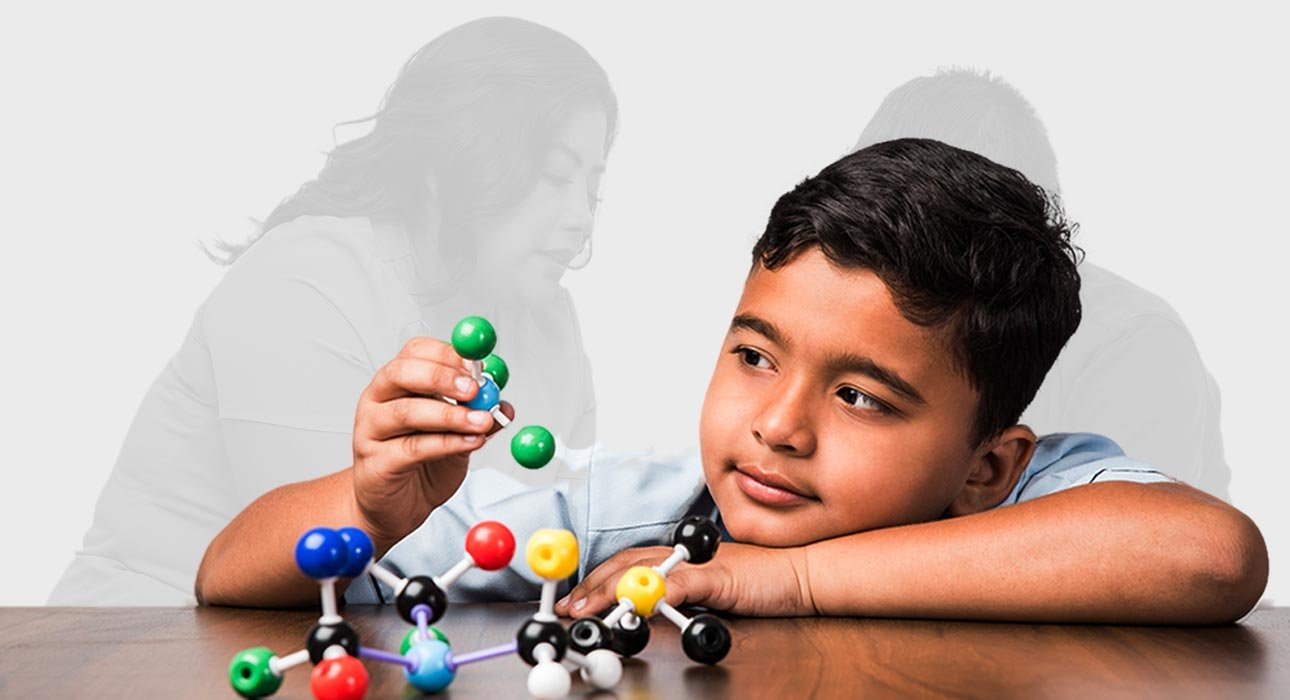For human development, Social Interaction has been considered a fundamental part (Burakgazi, 2025). However, when it comes to neurodivergent children, including but not limited to those with Autism Spectrum Disorder (ASD), Attention-Deficit Hyperactivity Disorder (ADHD), or any difficulties related to social communication, such as focus, initiation and sustenance of conversations, can get quite challenging (Theodoratou, 2024).
One of the most pragmatic ways to appraise their social skills is via organised or semi-organised assessments, such as “small talks,” in which children engage in brief, commonplace verbal exchanges to illustrate the breadth of their conversational ability. Small talks exemplify communication skills, provides insight into emotional regulation, theory of mind, and adaptive functioning (Tager-Flusberg, Paul, & Lord, 2005).
Read More: Importance of Social Interaction in Early Childhood Development
Importance of Social Communication in Development
Social communication allows children to make connections, learn social conventions, and develop emotional regulation. For neurodivergent children, challenges in this area can cause isolation, increase anxiety and misinterpret intent (American Psychiatric Association, 2013). Small talks, as micro-level assessments, check the child’s ability to use language pragmatically, such as turn-taking, staying on-topic, and understanding customary cues. Research indicates a link between those skills and predicting success academically and success across the life span socially (Volden et al., 2009).
“Small Talks” as a Social Test?
The term “small talk” refers not to casual conversation but to a structured, conversational probe that is intended to evaluate pragmatic language. The child is invited into a two-to-five-minute conversation based on familiar topics such as school, sports, or family. Responses are then assessed by the clinician/teacher based on conversational flow, coherence, and the ability to respond to initiations or to sustain the interaction (Adams et al., 2002). This approach is particularly valuable because it replicates a real-life situation, in contrast to standardised questionnaire data that do not tap into spontaneous social behaviour (Bishop, 1998).
Read More: The Importance of Socialisation in Influencing Human Behaviour
Small Talks and Neurodivergence
Children who are neurodivergent often show challenges with spontaneous social reciprocity. For example, children with Autism Spectrum Disorder (ASD) may respond factually, but rigidly, while children with ADHD may be distracted and unable to attend to the conversation (Green et al. 2010). Small talk tests can help illustrate both of these aspects in communication modality. Some children may respond with scripted, memorised conversation, while other children use behaviours that indicate nonverbal responses, gestures, and eye contact (Paul, Orlovski, Marcinko, & Volkmar, 2010).
Components of Small Talks: Cognitive and Emotional
Having a small talk requires an individual’s working memory, processing speed, and emotion regulation. For example, a child must recall what their friend just said on the last conversational turn, think about what their friend might be thinking, and adjust to their emotions (e.g. frustration or excitement) (Klin et al., 2007). It has been shown that deficits in these processes are recognised to correlate with conversation breakdowns for various neurodivergent groups (Baron-Cohen, 2000). Therefore, small talk can serve as a holistic measure of cognitive and emotional functioning in the moment.
The Role of Theory of Mind and Empathy
Children who are neurodivergent, such as children with ASD, are typically delayed in theory of mind, which makes it more difficult for them to adjust to their conversation partners (Frith & Happé, 1994). For example, if one child is asked what hobbies they enjoy, a neurotypical child may ask their peers a follow-up question about their hobbies, while a neurodivergent child may continue to discuss their hobbies without turning the conversation toward the other individual. The difference can be analysed through small talk, and small talk can be a target intervention.
Read More: The Role of Theory of Mind in Autism Spectrum Development
Practical Applications in Education
- Small talk tests can be used to assess social readiness in the classroom by teachers and speech-language pathologists.
- A student who struggles to join in with peers on the playground may be an ideal candidate for interventions or support based on their small talk assessment results (Kasari et al., 2012).
- Peer role-playing in a group can promote social confidence and inclusion (Odom, McConnell, & Brown, 2008). This is beneficial because assessment becomes teaching.
Clinical Use of Small Talk Assessments
Clinicians frequently depend on standardised diagnostic measures, such as the Autism Diagnostic Observation Schedule (ADOS). Small talk assessments offer more dimensions of ecological validity because they are analogous to interactions that occur in daily life (Lord et al., 2000).
Clinicians use their observations of conversational tendencies, adjusting practices such as pragmatic language therapy or therapeutic techniques that support cognitive-behavioural strategies for managing anxiety (White et al., 2010). This conceptualises small talk as a semi-diagnostic and therapeutic tool.
Read More: 8 Techniques from Cognitive-Behavioural Therapy for Positive Change
Challenges in the Utilisation of Small Talks as Tests
Although small talk assessments can be valuable, they also have limitations:
- Some neurodivergent students may exhibit stronger communication skills in one-on-one interactions, making it difficult to generalise to other contexts (Mundy & Neal, 2000).
- Additionally, culture shapes conversational styles, and small talk would presumably differ as a result of normative cultural values (Nelson, 2007).
- If assessments of small talk are overemphasised, this could emphasise bias over strengths and weaknesses for development.
In short, small talk assessments should be supplemented with assessments that are much broader in focus.
Future Directions
Technology advances may soon provide refined assessments of small talk. For example, AI-based conversation analysis tools can assess fine-grained features, such as response latency, prosody, and gesture synchrony (Bone et al., 2017). These could provide a more objective means of scoring while preserving some of the naturalistic validity of small talk assessments.
Conclusion
Small talk represents an important social assessment for neurodivergent children, elucidating both language pragmatics, theory of mind, and emotional regulation. These assessments use phenomenological observation and analysis and mimic, rather than formalise, a real-world social interaction, rather than pseudo, artificial written constructs in traditional assessment tools.
Small talk can provide important diagnostics and intervention opportunities. The assessments may present some cultural and methodology obstacles, but adding small talk assessments to educational or therapeutic practices could improve social inclusion, communication competence and longer-term developments (Kasari et al., 2012; Klin et al., 2007).
FAQs
1. What is the main purpose of small talk assessments for neurodivergent children?
They measure pragmatic language and social reciprocity in naturalistic settings, helping to identify strengths and challenges (Adams et al., 2002).
2. How are small talks different from standardised social tests?
Unlike rigid questionnaires, small talks simulate real-life conversations, capturing spontaneous behaviour (Lord et al., 2000).
3. Do small talks replace formal diagnostic tools like ADOS?
No, they complement them by offering ecological validity and guiding intervention planning (White et al., 2010).
4. Can teachers use small talk assessments in classrooms?
Yes, educators can integrate small talk exercises into peer interactions, promoting inclusion and confidence (Odom et al., 2008).
5. What are the prospects of small talk assessments?
Technological innovations like AI-driven analysis could make assessments more precise and scalable (Bone et al., 2017).
References +
Adams, C., Lloyd, J., Aldred, C., & Baxendale, J. (2002). Pragmatic language impairment: Case studies of social communication problems. Child Language Teaching and Therapy, 18(3), 173–198.
American Psychiatric Association. (2013). Diagnostic and statistical manual of mental disorders (5th ed.). Washington, DC.
Baron-Cohen, S. (2000). Theory of mind and autism: A review. International Review of Research in Mental Retardation, 23, 169–184.
Bishop, D. V. M. (1998). Development of pragmatic language impairment. *Journal of Child Psychology and Psychiatry, 39*(2), 241–249.
Bone, D., Lee, C., Black, M. P., Williams, M. E., Lee, S., Levitt, P., & Narayanan, S. (2017). The role of prosody and body gestures in ASD diagnosis. Autism Research, 10(6), 991–1002.
Burakgazi, S. G. (2025). The ecological model of human development. In Exploring Adult Education Through Learning Theory (pp. 325-342). IGI Global.
Frith, U., & Happé, F. (1994). Autism: Beyond “theory of mind.” Cognition, 50(1-3), 115–132.
Green, J., Charman, T., McConachie, H., Aldred, C., Slonims, V., Howlin, P., & Pickles, A. (2010). Parent-mediated communication-focused treatment in children with autism (PACT): A randomised controlled trial. The Lancet, 375(9732), 2152–2160.
Kasari, C., Rotheram-Fuller, E., Locke, J., & Gulsrud, A. (2012). Making the connection: Randomised controlled trial of social skills at school for children with autism spectrum
disorders. Journal of Child Psychology and Psychiatry, 53(4), 431–439.
Klin, A., Jones, W., Schultz, R., & Volkmar, F. (2007). The enactive mind, or from actions to cognition: Lessons from autism. Philosophical Transactions of the Royal Society B: Biological Sciences, 358(1430), 345–360.
Lord, C., Rutter, M., DiLavore, P. C., & Risi, S. (2000). Autism Diagnostic Observation Schedule (ADOS). Los Angeles: Western Psychological Services.
Mundy, P., & Neal, A. R. (2000). Neural plasticity, joint attention, and a transactional social-orienting model of autism. International Review of Research in Mental Retardation, 23, 1–48.
Nelson, K. (2007). Young minds in social worlds: Experience, meaning, and memory. Cambridge, MA: Harvard University Press.
Odom, S. L., McConnell, S. R., & Brown, W. H. (2008). Social competence of young children: Risk, disability, and intervention. The Journal of Early Intervention, 30(3), 139–144.
Paul, R., Orlovski, S. M., Marcinko, H. C., & Volkmar, F. (2009). Conversational behaviours in youth with high-functioning ASD and Asperger syndrome. Journal of Autism and Developmental Disorders, 39(1), 115–125.
Tager-Flusberg, H., Paul, R., & Lord, C. (2005). Language and communication in autism. In F. Volkmar et al. (Eds.), Handbook of Autism and Pervasive Developmental Disorders (pp. 335–364). Wiley.
Theodoratou M. (2024). Communication issues in co-occurring ADHD and autism spectrum disorders. Evaluative approaches and targeted interventions: mini review. Postepy psychiatrii neurologii, 33(3), 188–195. https://doi.org/10.5114/ppn.2024.145214
Volden, J., Coolican, J., Garon, N., White, J., & Bryson, S. (2009). Pragmatic language in autism spectrum disorder: Relationships to measures of ability and disability. Journal of Autism and Developmental Disorders, 39(2), 388–393.
White, S. W., Oswald, D., Ollendick, T., & Scahill, L. (2010). Anxiety in children and adolescents with autism spectrum disorders. Clinical Psychology Review, 29(3), 216–229.













Leave feedback about this